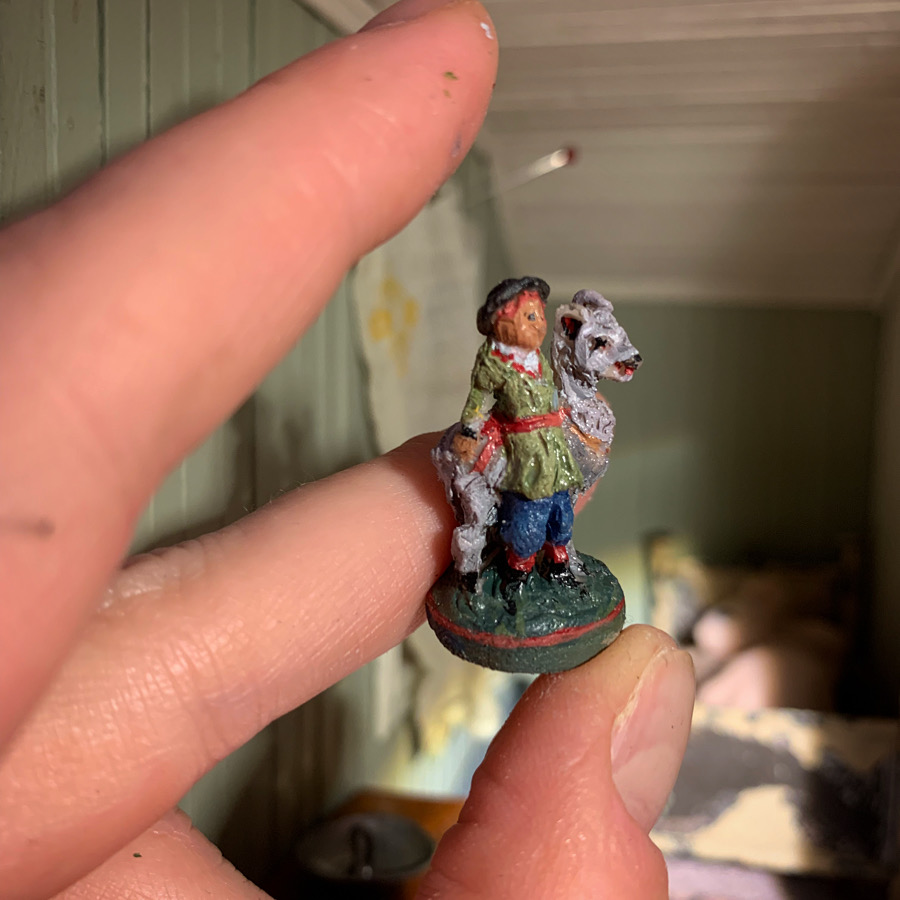Everything is sad, deliciously sad.
Alt er trist, deiligt trist.
Pesta (The Plague)
Theodor Kittelsen’s character Pesta is the personification of the Black Death, and she has long fascinated me. Because I have had an idea for many years to use the stories of epidemics—such as Tuberculosis, the Spanish Flu, and Polio—that my relatives and ancestors experienced, Pesta felt like the perfect starting point for a diorama.
So, when I was invited to exhibit my work at the Theodor Kittelsen Museum, Blaafarveverket, Norway, in the summer of 2024, I knew combining Pesta with this idea would be ideal.
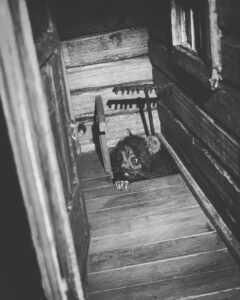
Polio
Poliomyelitis (polio) is a highly infectious viral disease that largely affects children under 5 years of age. It mainly targets the nerves in the spinal cord or brain stem, and it can lead to paralysis. Because the disease can also affect breathing, it sometimes results in death.
The last epidemics in Norway lasted from 1950 to 1954, so this diorama is set during that period to capture the impact of this devastating time.
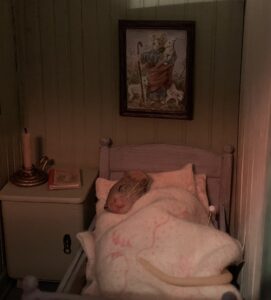
Bringing the diorama to my exhibition at The Kittelsen Museum
The Fear
The overall theme for this diorama is the crying mother’s fear. It captures the anxiety she feels because visitors may have brought the disease into her home, and it reflects her deep worry about not being able to protect her family.
Pesta symbolizes this fear perfectly because she is a figure who will always linger in the world as long as epidemics and pandemics exist.
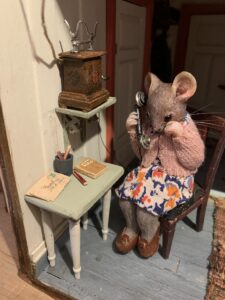
The house
I grew up hearing stories about how the Polio epidemics affected my parents and their families in the early 1950s. This scene is set in a house inspired by Vinterstua, an 1800s winter house on my grandparents’ farm in Østerdalen.
The house got electricity in the 1950s, though the telephone came earlier. Its interior reflects different eras, showcasing generations of use in the diorama.
The Child
I tried different versions of the child because I wanted the character to feel just right. I tested a mouse with wide-open eyes, listening intently to Pesta climbing the stairs, and I also experimented with an older-looking girl. But in the end, this version seemed to work the best—a very young and innocent child.
And because I wanted to convey a sense of comfort despite the tension, I gave her the most relaxed position I could imagine: all curled up, cozy, and safe.
Everyday life
I first tried having the father comfort the mother during her upsetting conversation, but I later changed it to him bringing in wood because it better reflected how the disease was part of everyday life. And most importantly, he left the door unlocked…
Building the house
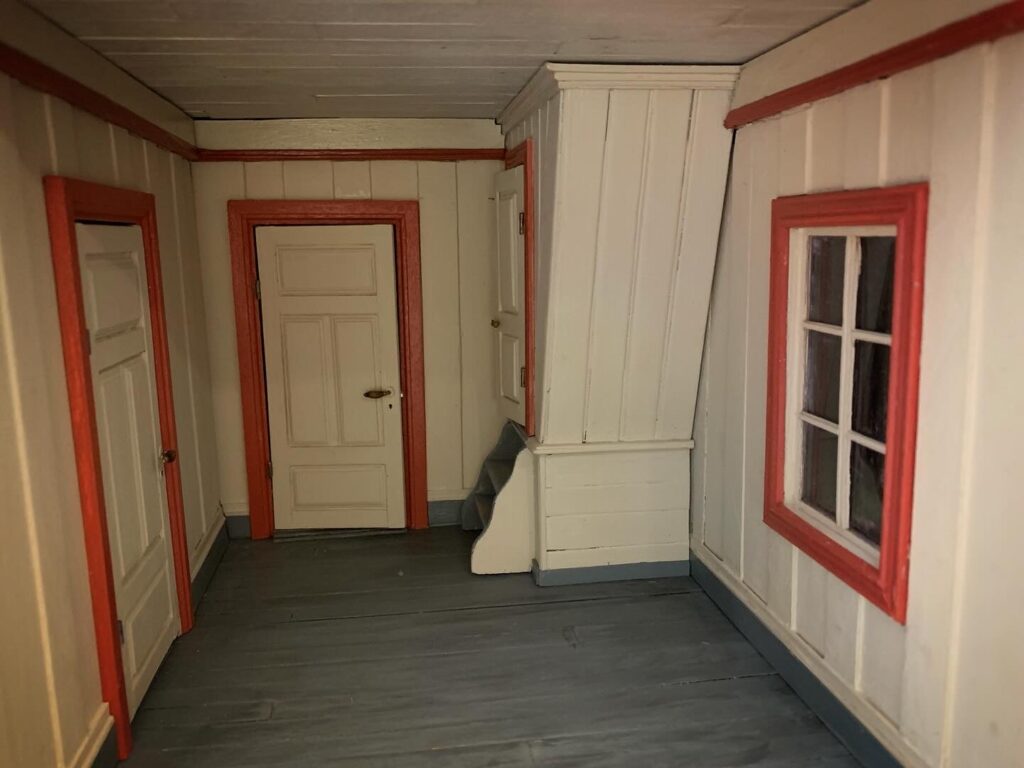
The hidden staircase
I loved this staircase in my grandparents’ house. The steps were steep, the space very narrow and small. It was slightly scary, but also mysterious and wonderful. Recreating it to the tiniest detail for this diorama, was really exciting.
The three rooms
Downstairs is the hall, and upstairs is the bedroom and the outer attic-space.
It was important to stay true to the different styles of these rooms, to tell the story of a house that has been in use for hundreds of years.
Pesta
Pesta is sculpted from polymer clay. She carries a rake, which according to the mythologi, means that she will spare some lives. If she brings a broom, everyone in the house dies.
Her teeth are from a mouse scull. (The mouse had died a natural death).
The telephone
This telephone is a miniature replica of an Electric Bureau Kristiania Norway model with a coat of arms handpainted “print”. I made it from wood , metal, buttons, pearls, thread and clay. Panited and stained.
The artworks
Painting pictures for the walls in the bedroom. Making frames from wood and metal.
Details
The sheperd with his goat-sculpture is made from polymer clay.
Dustpan and broom,made from wood, aliminum, and a piece of rabbits fur.
The cupboard/drawer
Lots of woodwork needed for this diorama!
I built a quite big, antique drawer, that I decorated with the use of a Dremmel and a carving tool.
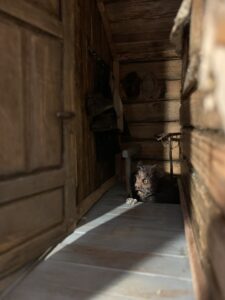
Behind the scenes
Playing around and blocking the scene takes a lot of time, but it’s always super fun!




































